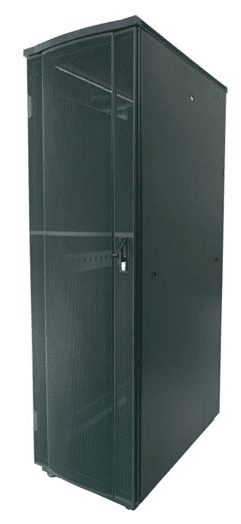การขนส่งตู้แร็ค มีหลากหลายวิธี ตามสถานทีของลูกค้าตู้ RACK SERVER
การขนส่งตู้แร็ค การที่ขนส่งตู้แร็ค ที่สั่งซื้อจากทางบริษัท rackth จะมีการจัดส่ง หลากหลายแบบ ตามสถานที่ของลูกค้า ถ้าลูกค้าที่อยู่ใน เขต กรุงเทพ และปริมาณ ที่มีเบอร์โทร 02
ทางจะมี บริการจัดส่งให้ฟรี โดยใช้ขนส่ง ที่ดีลกับทางบริษัทของเรา โดยตรง ส่งให้ถือมือลูกค้าอย่างปลอดภัย
แต่สำหรับลูกต่างจังหวัด ถ้าเป็นลูกค้าทั่วไป จะใช้ขนส่ง เอกชนที่ลูกค้าต้องการ หรือใช้ประจำ (ในกรณี ลูกค้าไม่เคยมีขนส่งประจำ สามารถขอให้ทางเรา แนะนำขนส่งให้ได้)
โดยให้มีการเก็บ เฉพาะค่าขนส่งปลายทาง ตอนรับสินค้า
แต่ในกรณี ลูกค้าต่างจังหวัด และเป็น ราชการ หรือสถานที่ห่างไกล การเก็บค่าขนส่งอาจต้องเก็บต้นทาง

การขนส่งตู้แร็ค (Rack Container) คือกระบวนการการขนส่งสินค้าหรือสิ่งของโดยใช้ตู้แร็คที่มีโครงสร้างแข็งแรงสามารถใส่สินค้าหรือวัสดุต่าง ๆ ลงไปภายใน เพื่อปกป้องสินค้าและความปลอดภัยขณะขนส่ง ตู้แร็คมักถูกใช้ในการขนส่งสินค้าทางทะเล, แลนด์ ระหว่างสถานที่ต่าง ๆ โดยใช้รถบรรทุกหรือรถไฟ, หรือหน่วยงานขนส่งทางอากาศ.
นี้คือขั้นตอนทั่วไปในการขนส่งตู้แร็ค:
- การเตรียมตู้แร็ค: ตู้แร็คต้องถูกตรวจสอบและเตรียมความพร้อมก่อนการขนส่ง รวมถึงการตรวจสอบว่าไม่มีความเสียหายหรือความชำรุดใด ๆ บนตู้แร็ค ตู้แร็คควรถูกแต่งและปิดทรงสนิท เพื่อปกป้องสินค้าภายใน.
- การบรรจุสินค้า: สินค้าหรือวัสดุที่จะขนส่งต้องถูกบรรจุลงในตู้แร็คอย่างมั่นใจว่าเข้ากับพื้นที่และขนาดของตู้แร็ค และถูกจัดเรียงอย่างมั่นใจเพื่อป้องกันความเสียหายในระหว่างการขนส่ง.
- การยึดตู้แร็ค: ตู้แร็คจะถูกยึดในตำแหน่งด้วยรถบรรทุกหรือรถไฟเพื่อการขนส่ง. ต้องมีการใช้รางลานหรือชุดยึดเพื่อให้ตู้แร็คติดมั่นในที่และป้องกันความสลัด.
- การขนส่ง: ตู้แร็คจะถูกนำถึงสถานที่ปลายทางโดยใช้วิธีขนส่งที่เหมาะสม รวมถึงการขนส่งทางทะเล, ทางบก, หรือทางอากาศ ตามลำดับที่เหมาะสมกับความสะดวกและค่าใช้จ่าย.
- การนำออกจากตู้แร็ค: เมื่อตู้แร็คถึงสถานที่ปลายทาง, สินค้าจะถูกนำออกจากตู้แร็คโดยตรงหรือตามคำสั่งเฉพาะของลูกค้า.
- การเก็บรักษาตู้แร็ค: ตู้แร็คมักถูกส่งคืนหรือจัดเก็บไว้ในสถานที่ที่เหมาะสมสำหรับการใช้ในคราวถัดไป.
การขนส่งตู้แร็คเป็นกระบวนการที่ซับซ้อนและต้องปฏิบัติตามมาตรฐานและกฎระเบียบที่เกี่ยวข้อง เช่น การตรวจสอบตู้แร็คก่อนการขนส่ง, การบรรจุสินค้าอย่างเหมาะสมและการสื่อสารระหว่างผู้ขนส่งและลูกค้าเป็นสิ่่งสำคัญในกระบวนการนี้.
Transporting a rack container is the process of moving goods or materials using a sturdy container known as a rack container, which is designed to protect and secure the cargo during transport. Rack containers are commonly used for transporting goods by sea, land, or air between different locations.
Here are the general steps involved in transporting a rack container:
- Preparing the Rack Container: The rack container needs to be inspected and prepared before transport to ensure that it is in good condition with no damage or defects. The container should be properly sealed and secured to protect the contents.
- Packing the Cargo: Goods or materials to be transported are loaded into the rack container, making sure they fit within the container’s dimensions. Cargo is arranged and secured within the container to prevent damage during transport.
- Securing the Rack Container: The rack container is secured in place with the use of a truck or a train for transport. Chassis or locking mechanisms may be used to ensure the container stays firmly in place and prevents shifting during transit.
- Transportation: The rack container is transported to its destination using the appropriate mode of transport, whether by sea, road, or air, depending on convenience and cost.
- Unloading the Cargo: When the rack container reaches its destination, the cargo is unloaded either directly from the container or as per the customer’s specific instructions.
- Rack Container Storage: Rack containers are often returned or stored in a suitable location for future use.
Transporting a rack container is a complex process, and it must adhere to relevant standards and regulations. This includes inspecting the container before transport, proper cargo packing, and effective communication between the transporter and the customer throughout the process.
